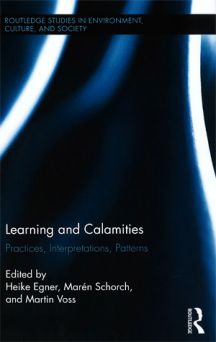Learning and Calamities: Practices, Interpretations, Patterns

In this thought-provoking book, Egner and colleagues bring together experts from various fields and disciplines to discuss whether learning from and through calamities takes place, what conditions enable or hinder it, and how learned knowledge can be sustained on the level of societies.
The book is structured around several topic areas, which broadly deal with:
· conceptualizations and ways of learning from disasters and calamities
· the role of history and the potential and caveats of learning from the past
· ways of educating and communicating for disaster preparedness
· organizational as well as societal patterns of interpretations and practices.
Authors were encouraged to make their disciplinary backgrounds transparent to readers. These reveal the nuances and variety of social constructivist approaches that exist in fields like disaster management and disaster education; organizational studies around concepts such as disasters, accidents, catastrophes, uncertainties and risk; and the broad range of methods used to analyse them.
A very interesting example in this regard is described in Chapter 16. This chapter examines the cultural differences of interpreting scientific–technological knowledge and their practical implications on flood mitigation and adaptation actions in the two radically different cases of the Limpopo Valley in Mozambique and Tennessee, USA.
The book raises many fundamental questions that determine how individuals and societies can gain profound understandings of calamities and risks, how they can mitigate anticipated impacts, and how they can cope and adapt when hazardous events occur. It shows the potential and benefits of innovative approaches, such as learning from animals (Chapter 3) or disaster risk education at the Spare-Time University (Chapter 8), while at the same time triggering thinking about less discussed elements of disasters that can hamper learning. The latter include blind spots induced by the interests of mass media, difficulties of attracting and maintaining attention for slow-onset disasters (Chapter 6), and communicating and acting on risks in the absence of calamities (Chapter 9).
Many chapters emphasize that learning how to act on risks, rather than simply identifying and analysing them, is necessary on individual, collective and societal scales. This requires going beyond research and practices that demonstrate multiple uncertainties surrounding (future) calamities. Hence, the book reveals the insufficiencies of experiential learning, event analyses and learning from the past. It also discusses shortcomings of current communication and education efforts. The book takes a critical step in this direction, for example through emphasizing the role of influential factors such as motivation and ambition, repeated and concise communication and education efforts, and adjustment of learning approaches to local contexts to encourage people-centered and issue-driven learning approaches.
Book note prepared by Julia Wesely
Search the Book notes database
Our Book notes database contains details and summaries of all the publications included in Book notes since 1993 - with details on how to obtain/download.
Use the search form above, or visit the Book notes landing page for more options and latest content.
For a searchable database for papers in Environment and Urbanization, go to http://eau.sagepub.com/

